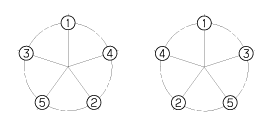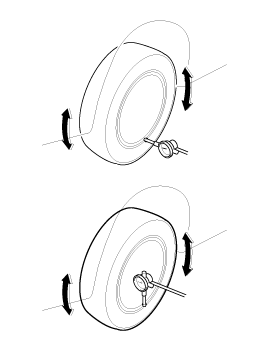Hyundai Kona: Tires/Wheels / Wheel Repair procedures
Hyundai Kona (OS) 2018-2025 Service Manual / Suspension System (NON-ECS) / Tires/Wheels / Wheel Repair procedures
| Hub nut tightening sequence |
Tighten the hub nuts as follows.
|
Tightening torque :
107.9 - 127.5 N.m (11.0 - 13.0 kgf.m, 79.6 - 94.0 lb-ft)
|

|
If the vehicle starts within 19 minutes after the replacement of the
wheel of the stopped vehicle, the TPMS Malfunction Indicator on the
instrument cluster illuminates.
|
Run out inspection
| 1. |
Jack up the vehicle.
|
| 2. |
Measure the wheel Run-out by using a dial indicator as illustration
below.
|
| 3. |
If measured value exceeds the standard value, replace the wheel.
|
 Tire Repair procedures
Tire Repair procedures
•
Using tires and wheel other than the recommended sizes could
cause unusual handling chara ...
 Alignment Repair procedures
Alignment Repair procedures
Front Wheel Alignment
•
When using a commercially available computerized wheel alignm ...
Other information:
Hyundai Kona (OS) 2018-2025 Service Manual: Components and components location
Component Location
[Fuel Tank]
1. Fuel tank
2. Fuel pump
3. Fuel filter
4. Fuel pressure regulator
5. Canister
6. Fuel tank air filter
7. Fuel perssure sensor
8. Fuel pump control module (FPCM)
9. Fuel level sender (FLS ...
Hyundai Kona (OS) 2018-2025 Service Manual: Specifications
Specifications
Description
Specifications
Limit
General
Type
In-line, DOHC
Number of cylinders
4
Bore
77 mm (3.0315 in)
...
© 2018-2025 www.hkona.com



